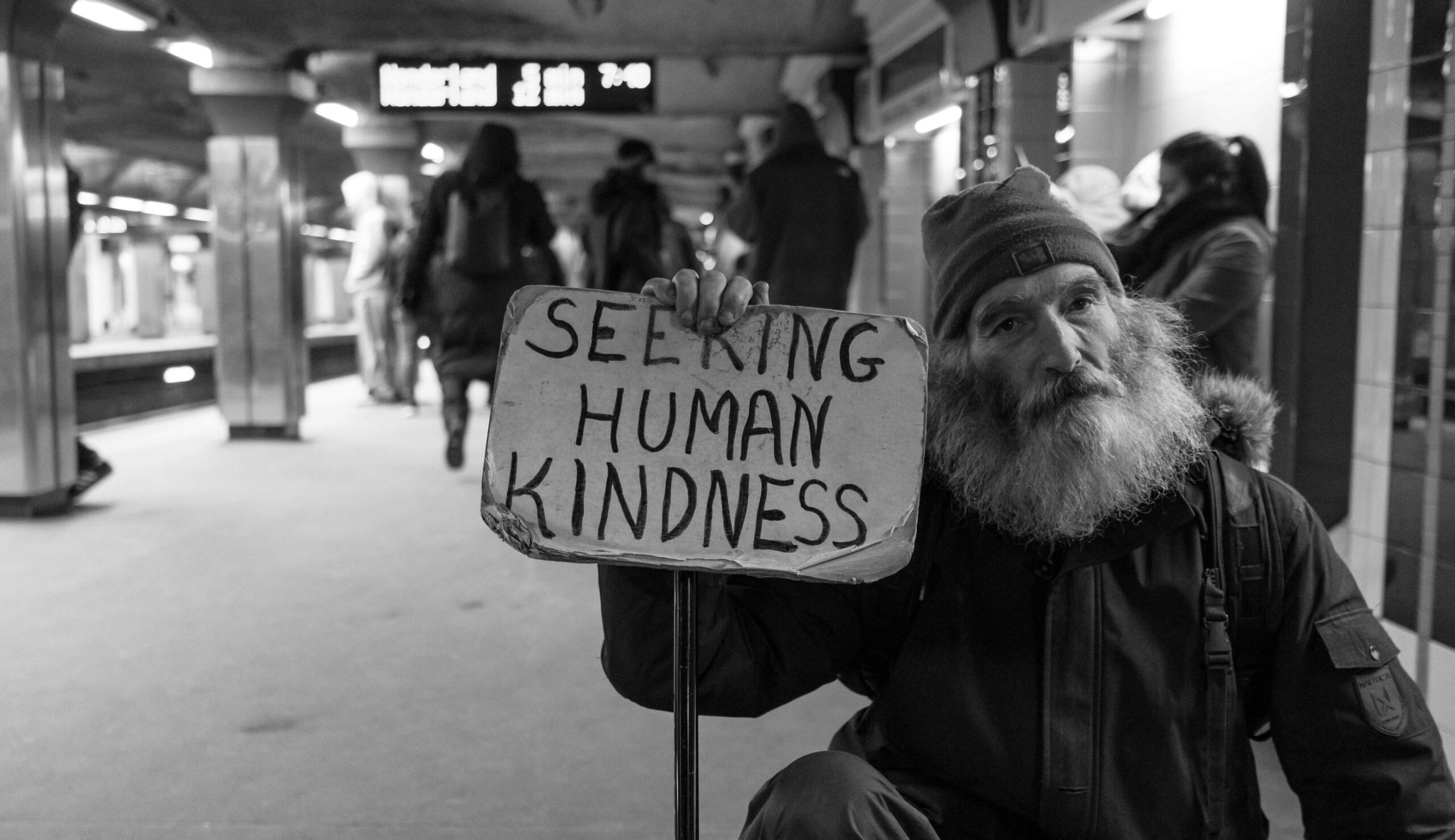Recent moves by the President of the United States to dismantle USAID, the world’s leading agency for international cooperation and development, are prompting deep reflection on the role of philanthropy in society. Philanthropy can be a powerful driver of change, not only social and economic, but also cultural and spiritual. When it is practiced with awareness, every act of giving supports not only those who receive but also those who give, helping to build relationships of trust that can serve as a foundation for development that benefits entire communities. This is why Wisedāna Foundation promotes a vision of philanthropy as a fundamental means of bringing people together in solidarity, countering the growing polarization we are witnessing today. Society is changing, and it is changing fast. Below we examine some of the key developments currently affecting the nonprofit world, and in particular the new challenges that philanthropy will have to face in the near future. Will the nonprofit sector be able to turn these challenges into opportunities for growth?
Rethinking giving in an aging society
Demographic change is playing a crucial role in reshaping philanthropic priorities. The aging of the population, which affects much of the Western world, calls for a rethinking of intervention strategies. As the number of elderly people in vulnerable economic conditions grows, there is an urgent need for initiatives that can offer security, healthcare, and support to ensure a dignified old age. Nonprofit organizations should therefore focus on programs that meaningfully improve the living conditions of older adults, recognizing the intrinsic value of each life and the importance of support networks that transcend age barriers. In this context, the challenge for the philanthropic sector is not just to manage funds and resources, but to revise its model of intervention, integrating giving with an active commitment to social change. Support for the elderly thus becomes an integral part of a broader vision in which individual wellbeing is closely linked to collective wellbeing, and in which every act of generosity becomes a gesture of care. The demographic transition urges us to see giving not only as a resource to be distributed, but as a force that can help build a future where dignity and respect for every human being are central values.
Corporate volunteering: skills, care and social responsibility
Volunteering is also undergoing a deep transformation. Traditionally seen as an occasional commitment, today it takes on increasingly sophisticated and flexible forms, encouraging direct and targeted engagement that values individual skills. The practice of skills-based volunteering is becoming more widespread, with many professionals offering their expertise — from technology to communications, from management to legal assistance — to support nonprofit organizations. This trend not only promotes more effective action, but also reflects the Buddhist ideal of serving others with one’s unique qualities, recognizing that every talent placed in service of the community can be a powerful tool for growth. Corporate volunteering is also gaining ground. More and more companies, aware of their social responsibility, are incorporating volunteering programs into their strategies, encouraging employees to dedicate part of their working time to socially useful initiatives. In this way, the connection between professional work and social engagement becomes stronger, creating environments in which care for others is embedded in corporate culture. A report by the Points of Light Institute highlights how corporate volunteering is becoming one of the main forms of engagement in the business world. In Italy, an increasing number of companies are including corporate volunteering in their CSR strategies. Currently, over 4,000 companies — equivalent to 5% of businesses with at least 50 employees — offer their staff the opportunity to engage in skills-based volunteering. Another 21,000 companies (26%) are considering introducing such programs into their development strategies. This is an approach that goes beyond traditional corporate social responsibility. It lays the groundwork for genuine collaboration between the business world and civil society, in which solidarity becomes a key driver of both development and innovation.

Will philanthropy support social justice?
Philanthropy is becoming increasingly complex, integrating economic, social, and spiritual dimensions into a rich and stimulating framework. The challenge of social justice requires a reconsideration of priorities in a context marked by growing socio-political polarization and changing funding dynamics. Resources allocated to programs that aim to reduce inequality have been steadily decreasing, pushing organizations to find new ways to ensure their sustainability. In this scenario, the commitment to social justice — as both an ethical and political act — requires the diversification of funding sources and the adoption of models capable of measuring the real impact of actions taken. Finding the right balance between immediacy and continuity of support is one of the main dilemmas of contemporary philanthropy. On the one hand, focused and intensive giving — as seen in models such as spend-down philanthropy — allows for significant short-term impact. On the other, the need to maintain long-term support networks invites reflection on how to ensure the continuity and effectiveness of initiatives, even as financial incentives may shift. The challenge is to act decisively in the present while cultivating forms of giving that leave a lasting mark and sustain commitment over time. In recent years, new hybrid approaches have emerged that combine immediate impact with the possibility of developing long-term donor relationships. One example is Giving Tuesday, held on the Tuesday after Black Friday, now a global event that mobilizes millions of people. Created as a response to rampant consumerism, this international day is an invitation to act but also to reflect on the meaning of giving. The initiative continues to grow, and is a clear sign that society is ready for acts of solidarity that turn individual giving into collective, shared gestures. At the same time, Giving Tuesday reveals the risk that such moments remain isolated episodes rather than the beginning of a lasting commitment. The real success of these initiatives lies in their ability to sustain a meaningful connection between donors and causes, transforming the enthusiasm of a single day into an ongoing journey of generosity. The challenge is to move from occasional acts to a culture of giving rooted in authentic, long-term relationships, where giving becomes a conscious and meditative act, illuminating the path of both the giver and the receiver. This calls for a new form of communication — one that tells the story of impact and strengthens the deep bond between donors and the causes they support, nurturing hope for a more just and compassionate world.
The tool of philanthropy is in our hands
The philanthropic sector is at a crossroads, and we — as citizens of today’s society — can choose which path to take. We can continue along the traditional path of charity, sometimes marked by paternalism, or we can make a leap toward a new vision of philanthropy, rethinking how we understand and practice generosity. Every strategy we choose becomes part of a broader mosaic, where solidarity, civic engagement, and spiritual awareness come together to shape a path of global transformation. Giving, understood as a conscious and meditative act, becomes a means of creating genuine relationships, opening new channels of dialogue, and building a future where social justice is not just an ideal, but a lived and shared reality. The holistic approach that defines this new philanthropy invites each of us to reflect on the inherent value of giving. It encourages us to go beyond the logic of mere financial transactions and to embrace a vision in which every act of generosity carries light and hope. In a world where uncertainty and challenge are daily realities, giving becomes an act of courage, a conscious choice to embrace the fragility and beauty of life, contributing to a support network that unites people in a journey of continuous growth and renewal. The transformation of philanthropy is therefore not only a matter of strategy or financial models, but an invitation to recognize our interconnection and the responsibility we carry in shaping a better future. In this process, every decision becomes an opportunity to spark the awareness that inspires us to serve others with love and dedication. In this perspective, generosity becomes a powerful tool for transformation. Through it, we can break down barriers and bring to light the power of solidarity as the foundation of a more just, harmonious, and sustainable society. Giving should no longer be seen as an occasional gesture, but as a daily practice that, like meditation, helps us find inner balance and contribute to the wellbeing of the collective. The invitation is to embrace this new perspective, with the awareness that every act of generosity, no matter how small, can transform our world into a more humane and compassionate place.
- Secondo le proiezioni di Eurostat, la percentuale di persone di 65 anni e oltre nell’Unione Europea è destinata ad aumentare dal 21,1% nel 2022 al 32,5% nel 2100. In Italia, l’Istituto Nazionale di Statistica (Istat) prevede che, entro il 2050, le persone di 65 anni e più potrebbero rappresentare il 34,5% della popolazione totale. Si veda : Eurostat, “Population projections in the EU,” disponibile su: https://ec.europa.eu/eurostat/statistics-explained/index.php/Population_projections_in_the_EU ↩︎
Testo a cura di Beatrice Marzi
Revisione editoriale a cura di Marta Turchetta
1. According to Eurostat projections, the percentage of people aged 65 and over in the European Union is expected to rise from 21.1% in 2022 to 32.5% by 2100. In Italy, the National Institute of Statistics (Istat) estimates that by 2050, people aged 65 and over could represent 34.5% of the total population. See: Eurostat, Population projections in the EU, available at: https://ec.europa.eu/eurostat/statistics-explained/index.php/Population_projections_in_the_EU ↩︎
2. Secondo le proiezioni di Eurostat, la percentuale di persone di 65 anni e oltre nell’Unione Europea è destinata ad aumentare dal 21,1% nel 2022 al 32,5% nel 2100. In Italia, l’Istituto Nazionale di Statistica (Istat) prevede che, entro il 2050, le persone di 65 anni e più potrebbero rappresentare il 34,5% della popolazione totale. Si veda : Eurostat, “Population projections in the EU,” disponibile su: https://ec.europa.eu/eurostat/statistics-explained/index.php/Population_projections_in_the_EU ↩︎



